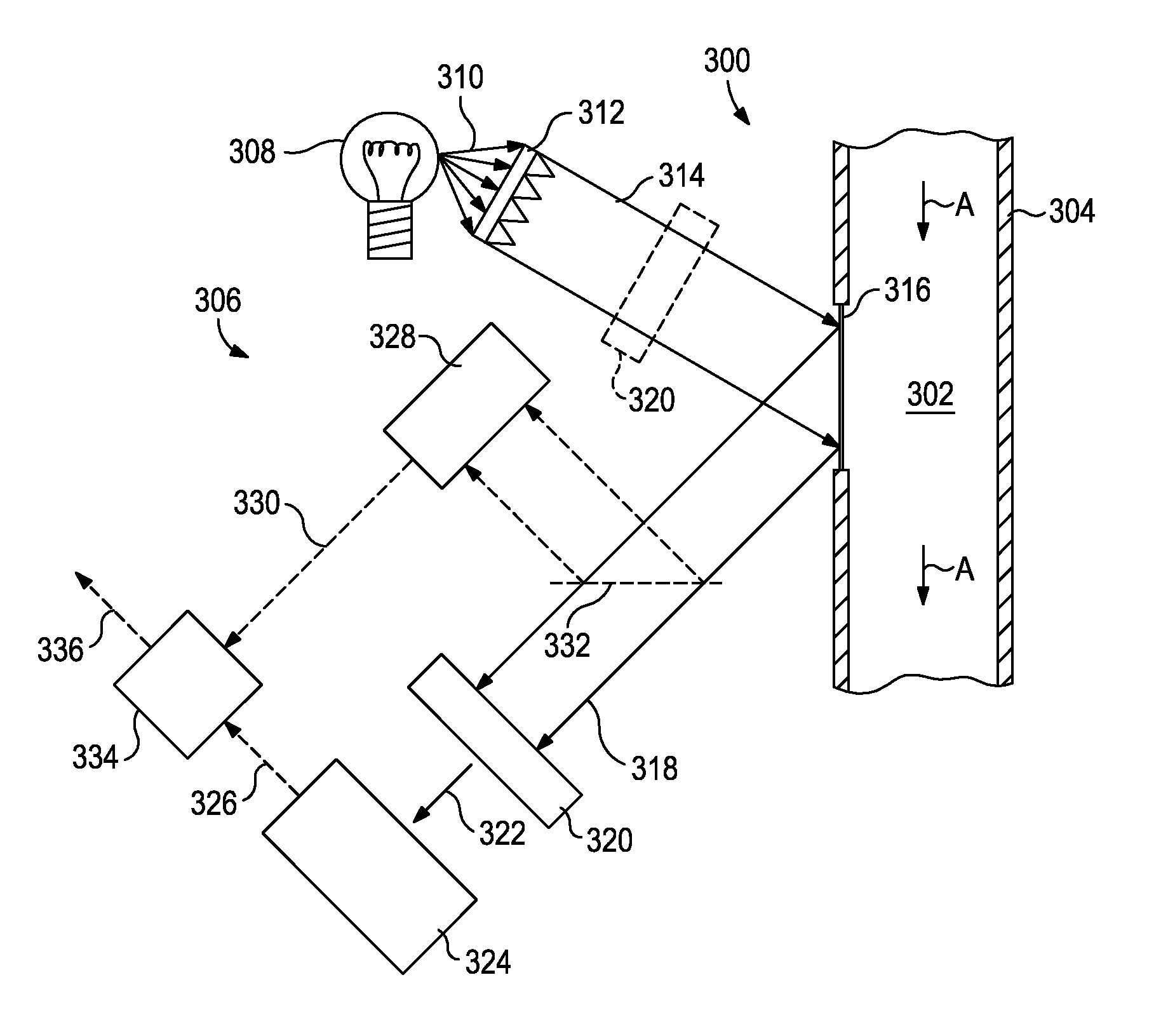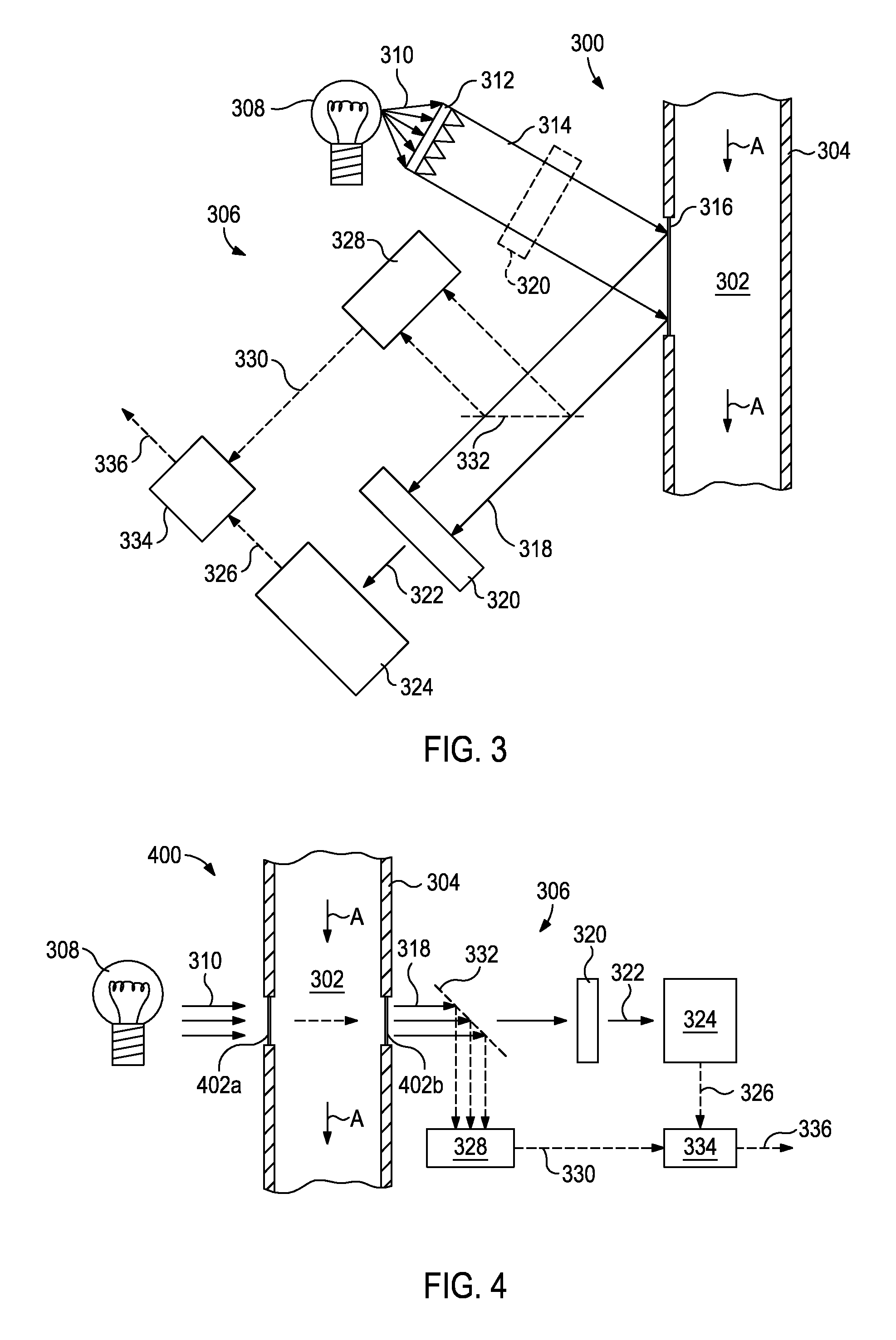Systems and Methods for Monitoring the Quality of a Fluid
a technology of fluid quality and system, applied in the field of methods for monitoring fluid, can solve the problems of difficult off-line laboratory analysis, difficult to perform off-line laboratory analyses, and large sample preparation,
- Summary
- Abstract
- Description
- Claims
- Application Information
AI Technical Summary
Benefits of technology
Problems solved by technology
Method used
Image
Examples
Embodiment Construction
[0017]The present invention relates to methods for monitoring a fluid in or near real-time and, more specifically, to methods for monitoring a fluid having one or more adulterants therein.
[0018]The exemplary systems and methods described herein employ various configurations of optical computing devices, also commonly referred to as “opticoanalytical devices,” for the real-time or near real-time monitoring of a fluid. In operation, the exemplary systems and methods may be useful and otherwise advantageous in determining product quality of the fluid. For example, the optical computing devices, which are described in more detail below, can advantageously provide real-time or near real-time fluid monitoring that cannot presently be achieved with either onsite analyses at a job site or via more detailed analyses that take place in a laboratory. A significant and distinct advantage of these devices is that they can be configured to specifically detect and / or measure a particular component...
PUM
| Property | Measurement | Unit |
|---|---|---|
| time | aaaaa | aaaaa |
| electromagnetic radiation | aaaaa | aaaaa |
| volatile | aaaaa | aaaaa |
Abstract
Description
Claims
Application Information
 Login to View More
Login to View More - R&D
- Intellectual Property
- Life Sciences
- Materials
- Tech Scout
- Unparalleled Data Quality
- Higher Quality Content
- 60% Fewer Hallucinations
Browse by: Latest US Patents, China's latest patents, Technical Efficacy Thesaurus, Application Domain, Technology Topic, Popular Technical Reports.
© 2025 PatSnap. All rights reserved.Legal|Privacy policy|Modern Slavery Act Transparency Statement|Sitemap|About US| Contact US: help@patsnap.com



